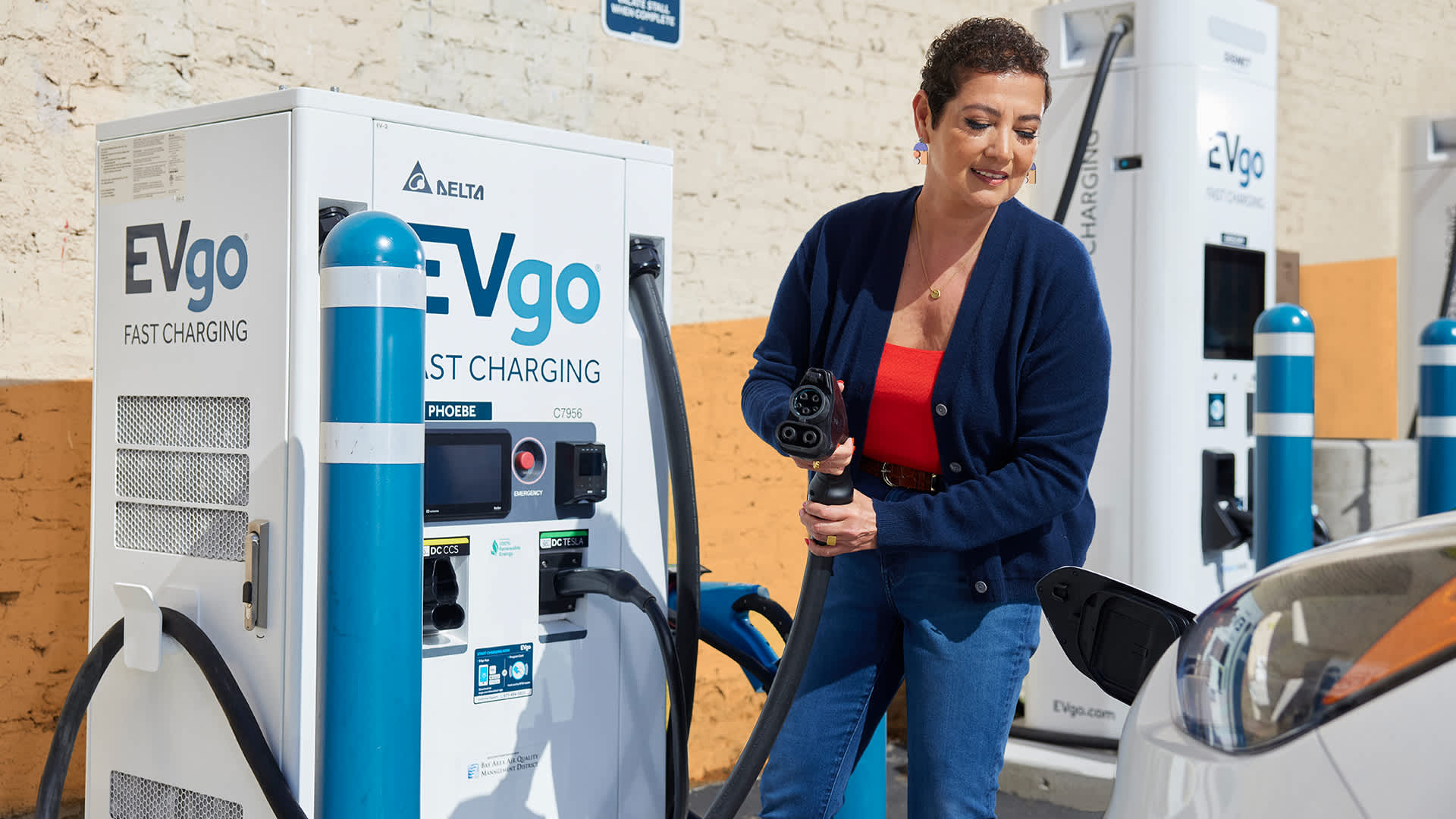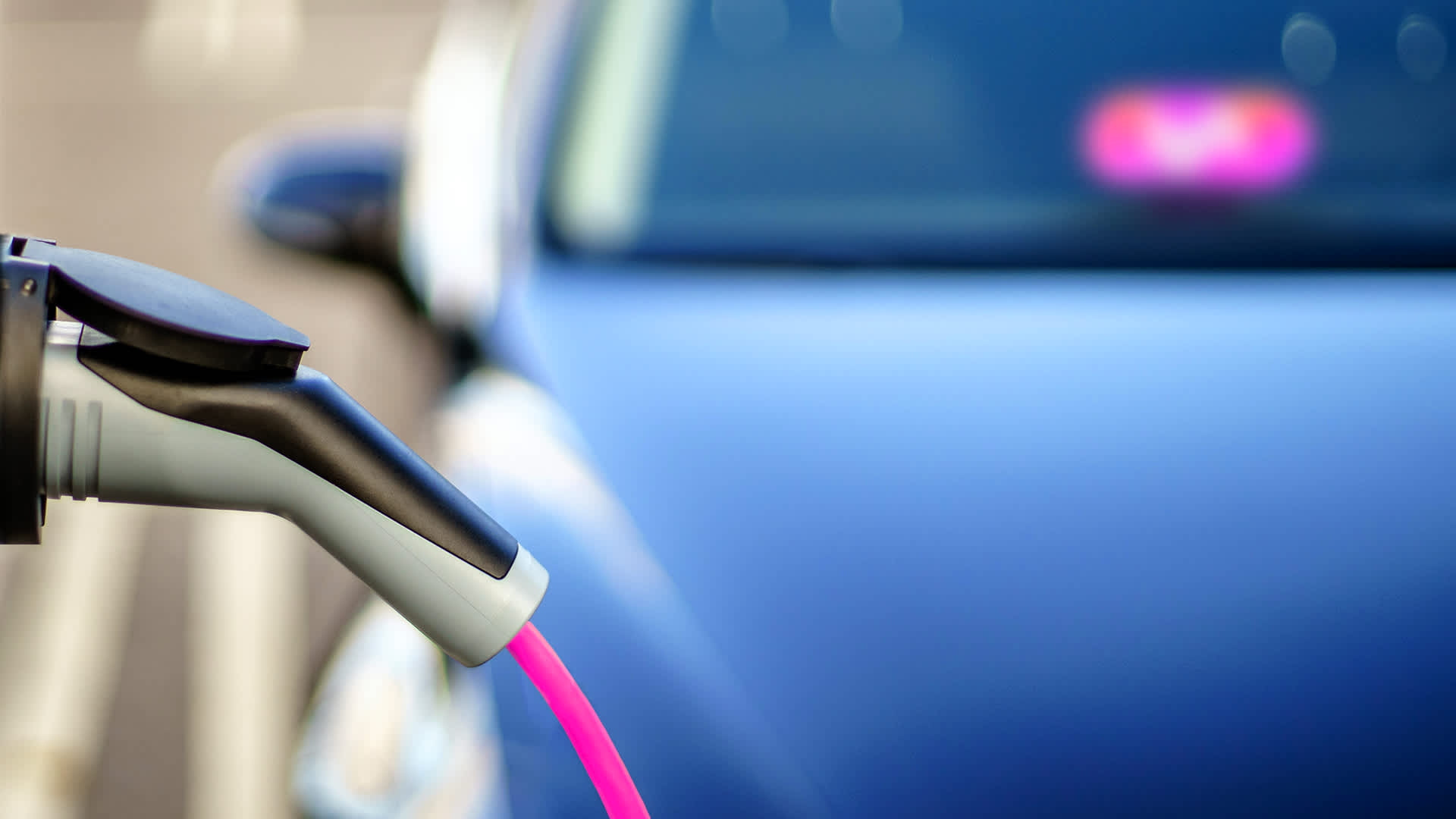
In June 2020, Lyft announced its goal of achieving 100% electric vehicles on its platform by the end of 2030. To put the enormity of this pledge in context, in 2022, a record-setting year for electric vehicle sales in the U.S., EVs still comprised only about 6% of all new vehicles sold. Because most drivers on the Lyft platform utilize their own vehicles, you might expect their EV ownership to be roughly in line with the national market share.
In other words, Lyft faces an enormous challenge. But inside that challenge lies a wider promise: Figure out how to convert those drivers, and you’ve cracked the pathway to wide-scale adoption.
Paul Augustine, Lyft’s director of sustainability, is one of the people responsible for solving that problem. Augustine has had a long career in clean tech, working as everything from a carbon credit trader to a policy analyst for the U.S. Environmental Protection Agency. One of the main reasons he joined Lyft in 2018, he says, is because of his belief in “the huge opportunity for rideshare to lead the way in transportation electrification.” The most active drivers, who spend entire days ferrying passengers, are the power users of the American road. “Those are the ones we’re going to have to solve for first,” Augustine says. Replacing their cars with EVs represents a big bang for the buck — both for the drivers and society as a whole. “If someone’s driving three to five times as much as a regular person whose car is sitting idle 95% of the time,” Augustine says, “that means we’re getting three to five times the emissions reduction.” And it’s those higher-mileage drivers who stand to save the most by moving away from gasoline.
But high mileage can make EVs a harder sell. Researchers from the University of Geneva, surveying drivers in Germany and the United States, identified a clear cognitive bias when it comes to EVs. “Participants,” one researcher noted, “systematically underestimated the compatibility of electric battery capacities on the current market with their real needs.” In other words, most drivers don’t appreciate that a single charge is usually sufficient.
This holds true for drivers on the Lyft platform as well, the vast majority of whom rack up fewer than 230 miles per day — the median range of new EVs. Christine Campigotto, Lyft’s director of policy insights, has been polling drivers on their openness to EVs and what factors would convince them to make the switch. She notes that one of the top responses to the question “What is your biggest concern around driving an EV with Lyft?” is concern about the amount of time spent charging and the distance that can be driven on a single charge.
How to overcome these hurdles? Clues might be found in Diffusion of Innovations, the sociologist Everett Rogers’s classic 1962 book on how technology spreads through society. Rogers identified five key factors driving adoption: relative advantage, trialability, observability, compatibility, and complexity — all of which are relevant to Lyft’s EV push. Take trialability, the notion that people are more likely to adopt a technology if they can sample it before committing to it. Lyft began tackling that dynamic with a program in Seattle and Atlanta, in which drivers could rent EVs by the week via its Express Drive rental partner program. Even those who didn’t take advantage of the program may have been influenced by it. Rogers’s variable of “observability” holds that the more drivers and passengers see EVs, the more likely they are to adopt them. For instance, riders who have ridden in an EV are 38% more likely to consider purchasing one, according to Lyft’s data.
Riders who have ridden in an EV are 38% more likely to consider purchasing one.
The Express Drive EV program, which has expanded to new markets over the past four years, also tackled another diffusion-of-innovation dynamic: complexity. Many people are still unsure of the precise benefits of EVs, or are concerned about their mechanical robustness, or are even unclear about how they work. (One Ford study, for instance, found many consumers thought EVs required gasoline.) So Lyft pulled together informational materials, Augustine says, to help drivers get the most out of their experience — “Stuff like: ‘Hey, don’t fill up to 100% on your battery; just go up to 80%. It’ll save you a lot of time, and you’ll get most of the benefit.’ ”
Lyft also produced a website clearly spelling out the various benefits — Rogers’s “relative advantage” — of shifting to electric, e.g., not only fuel savings of $50 to $100 a week but the fact that, nationally, passengers in electric rides tip upwards of 40% more than passengers in standard cars. It also helped ameliorate one of the pain points — time spent charging, which represents lost driving (and earning) time. Lyft partnered with EVgo to give discounts of up to 45% on fast charging; deals with Wallbox and Coil offer discounts on home-charging units. “We need to do something extra initially to get drivers to understand they’re still saving money, even if there’s downtime for them to charge in the middle of the day,” says Augustine. Still, he says, the drivers who did the best with the trial were those who could figure out how to build charging time into their day (like while stopping for lunch).
That should become even clearer as charging becomes more efficient. (“There are vehicles now that can charge in 18 minutes,” says Augustine. “That’s a game changer.”) But access to charging is another matter. To date, in the U.S., EV car ownership has tilted toward males living in higher-income areas with access to home charging. But drivers on the Lyft platform tend to come from outside that narrow band. “The majority of drivers come from minority communities,” Augustine says. “They’re in neighborhoods that don’t have EV chargers; they’re renters.”
While there are start-ups working to provide charging solutions for multiunit buildings, Augustine notes “it’s by no means an easy nut to crack — you have to get the landlord on board, you have to get the utility on board to do an energy upgrade, and it’s for somebody who’s one of a hundred tenants in a building, probably a renter that’s going to move anyway.” Indeed, in a recent survey of U.S. drivers on the Lyft platform, 37% reported they couldn’t install a home-charging station, even if it were free. This hurdle speaks to the “compatibility” issue identified by Rogers: People are more likely to adopt new technologies when they can easily fit them into their lives.
Perhaps the most salient hurdle has been the cost of the vehicle: The average EV cost in 2022 was north of $60,000 — encroaching into luxury territory and well above what the average driver on the Lyft platform, as research has shown, intends to spend. “These vehicles are still $10,000 to $15,000 more expensive than an analogous internal combustion vehicle,” says Augustine, noting that he expects pricing parity in the next few years. “And there isn’t a robust used EV market.” Meanwhile, many drivers don’t have access to financing.
The bar is high, but so are the consequences of inaction.
Christine Campigotto, Lyft’s director of policy insights
Since Lyft made its pledge, California and New York have stipulated their own deadlines for ridesharing companies to shift to zero-emission vehicles — a strong reinforcement of Lyft’s approach. “Our goal is to hit an EV rate of 100%, which is probably above where the general population will be,” Campigotto says. “The bar is high, but so are the consequences of inaction. That’s why we’re working on multiple fronts to meet it.” And because Lyft alone can’t overcome social hurdles like access to charging, it has also advocated for new policy work. Much of it is focused on “making sure the push for EVs is meeting the needs of communities of color and lower-income communities,” Campigotto says, “because many drivers come from those communities, and we’re advocating on their behalf.” (One example: Lyft joined the successful effort to change the federal EV incentive from a tax rebate, which can be realized only months after purchase, to a point-of-sale rebate, which immediately reduces out-of-pocket costs.)
Overall, Augustine says, the approach needs to be more carrot than stick. “We need to basically make it a no-brainer,” says Augustine. “It shouldn’t be us forcing drivers to get an electric vehicle.” While 100% EV penetration is indeed a challenge, he notes it’s also an opportunity: “We’re acting on behalf of millions of these folks that have traditionally been left out of the clean tech transition.” While he says there’s often been the assumption that such technology will eventually trickle down, when it comes to the climate, “we don’t have that luxury — to make deep emissions reductions that top climate scientists tell us are urgently required, we need equitable access to EVs and EV charging in short order.”
The content provided in this article is for informational purposes only. Unless otherwise stated, Lyft is not affiliated with any businesses or organizations mentioned in the article.


